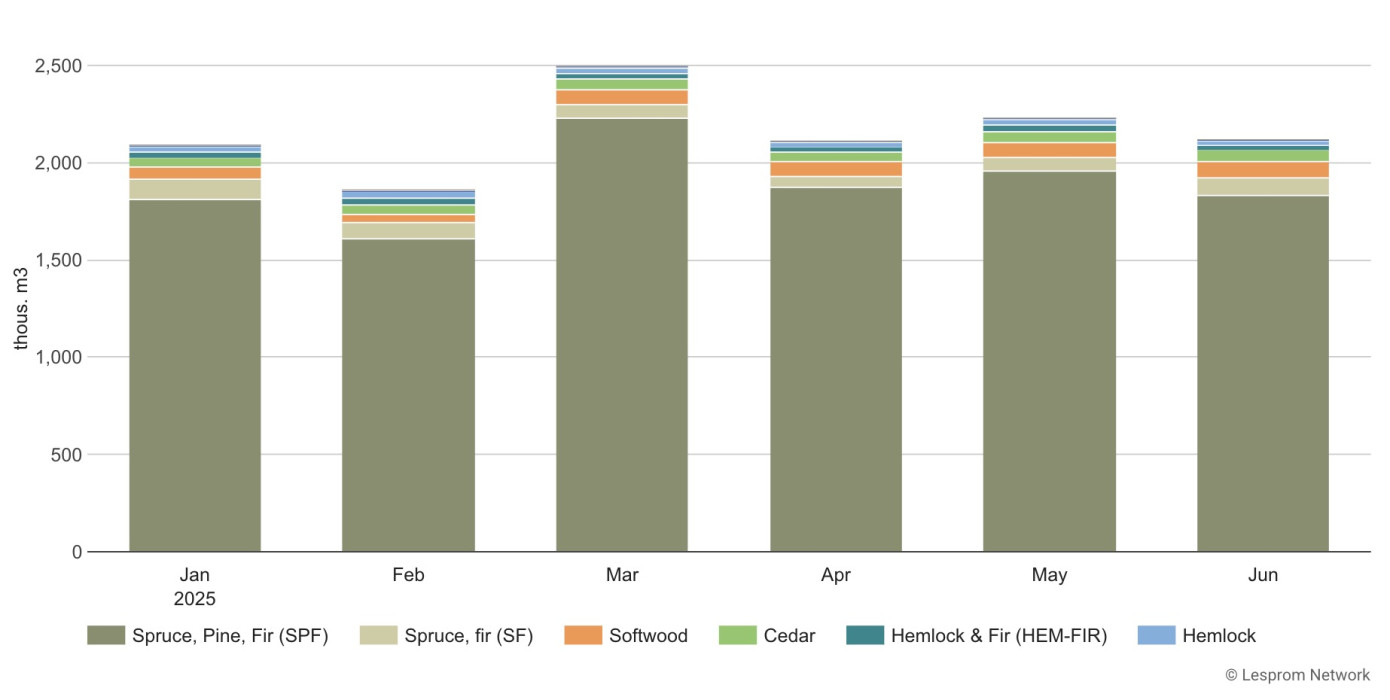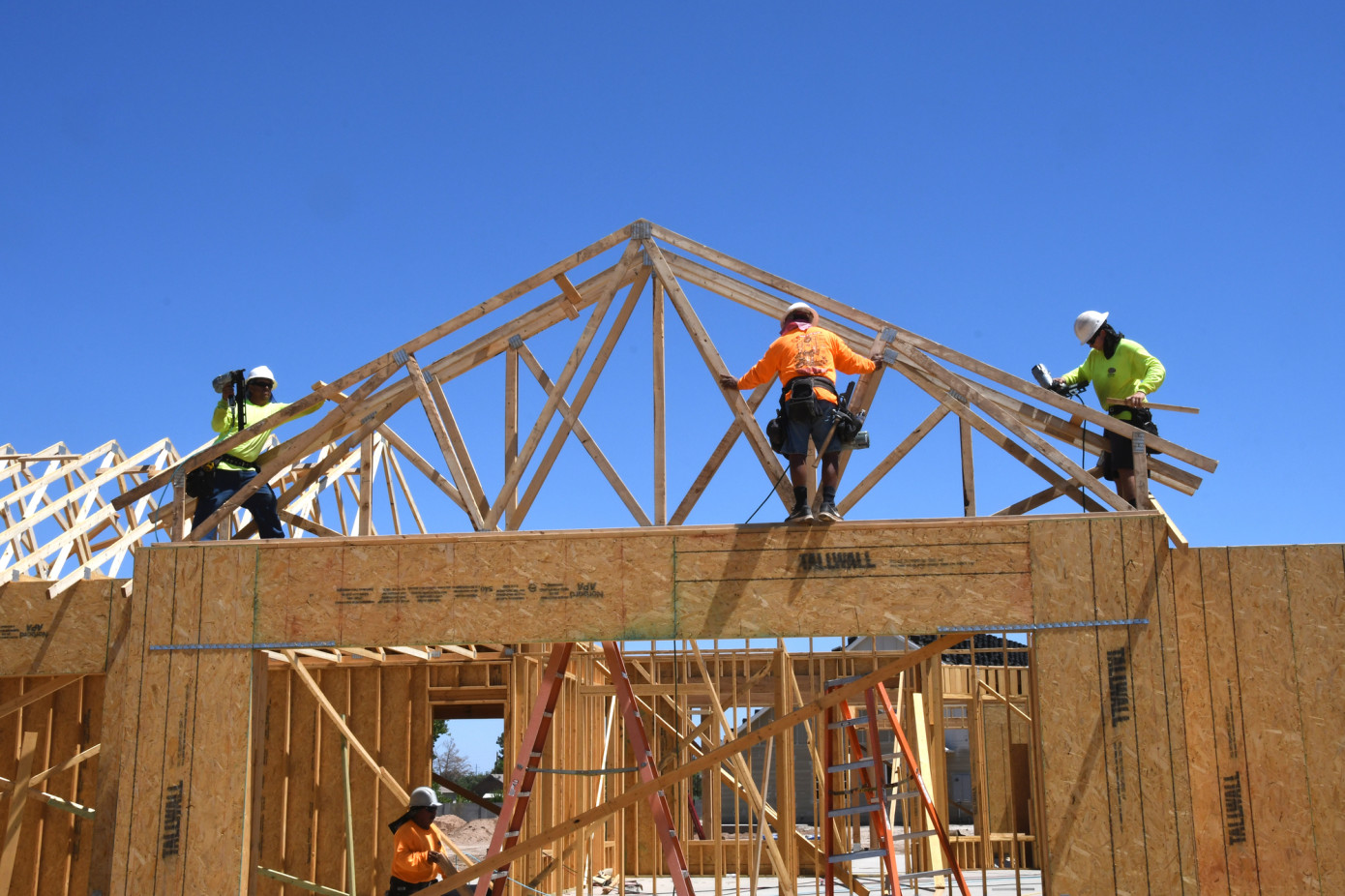Construction companies across the United States continue sourcing Canadian lumber even as tariffs push prices higher, due to building specifications that disqualify equivalent American wood. Dealers report that project plans increasingly require Canadian SPF (spruce-pine-fir) by name, leaving no option to substitute domestic SPFs, which are classified differently under U.S. grading rules. This forces U.S. retailers to import higher-cost Canadian lumber to meet regulatory standards, according to the American Building Materials Alliance.
As of August 2025, the total U.S. duty on Canadian softwood lumber stands at 35.19%, composed of 20.56% anti-dumping and 14.63% countervailing duties. This is more than double the 14.40% combined rate in January 2025, which included 7.66% anti-dumping and 6.74% countervailing. Despite this increase, dealers say there is little flexibility in procurement because building specifications often mandate Canadian SPF explicitly. Image: Distribution of Canada’s softwood lumber exports to the United States by species, January–June 2025 / Lesprom Analytics
Brian Rodgers, purchasing manager at Shepley Wood Products, noted that higher Canadian prices often lead U.S. mills to raise their own prices. “Everybody follows the numbers. It doesn’t matter what side of the border it’s coming from,” he said, pointing to the limited negotiating room for dealers. Tony Shepley, president of Shepley Wood Products, stressed the industry’s role in maintaining affordability: “It’s our mission as an industry to protect consumers, to not let housing get driven further out of reach.”
Retailers in New Hampshire report that their inventories have fully shifted to Canadian SPF, not due to quality differences but because American SPFs are graded under a separate system that prevents substitution in most projects. “We now only stock Canadian SPF,” said Eric Murphy, purchasing manager at East Coast Lumber and incoming president of the New Hampshire Retail Lumber Association. “It’s not a question of preference; it’s about meeting the requirements of the jobs our customers are building.”
The U.S. currently imports nearly 70% of all Canadian softwood lumber exports. ABMA states this structural reliance is reinforced by technical standards, not market choice. In response, the Northeastern Retail Lumber Association is working to introduce state legislation requiring a preference for American SPF when cost and performance are comparable.
Though tariffs have encouraged some Canadian sawmills to open facilities in the United States to avoid duties, bringing a degree of domestic investment, ABMA notes this has not eased pricing pressure. The group supports a long-term negotiated trade agreement with Canada, alongside reforms to grading standards that would allow American SPFs to qualify under current building codes.
“Tariffs at this level send a clear signal that the status quo isn’t sustainable,” said Rod Wiles, Chair of ABMA and Vice President at Hammond Lumber Company. “We need long-term solutions that give American products a fair chance in the market.”
ABMA’s outlook is that the current 35.19% tariff, combined with the growing specification-driven preference for Canadian SPF, will keep price pressure high. Without resolution, U.S. retailers will remain tied to a pricing system shaped as much by trade policy as by supply and demand, limiting the competitiveness of domestic lumber in the North American market.
